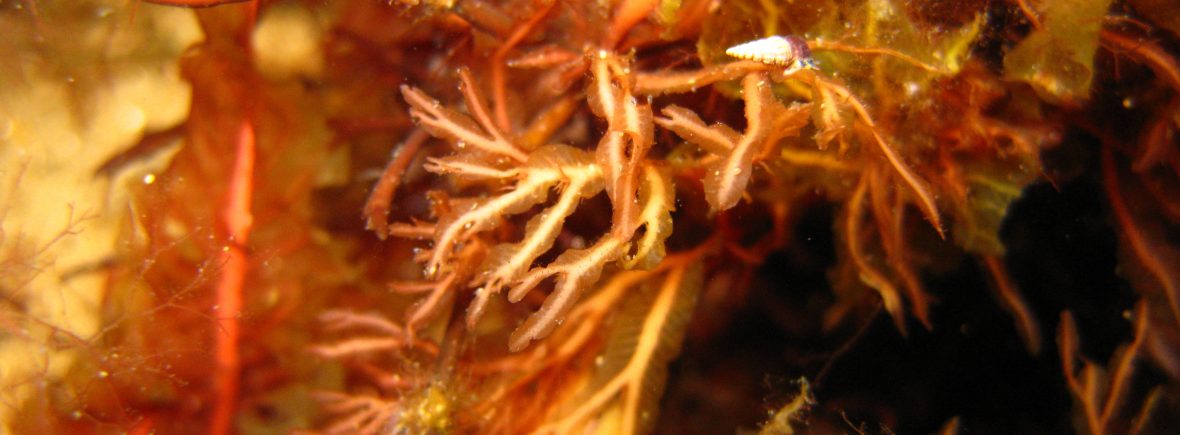The red algae zone is the characteristic hard bottom vegetation of the lower sublitoral along the open coastline. All species in focus have a perennial life cycle and an erect, branched growth habit. Especially, Coccotylus/Phyllophora and Furcellaria lumbricalis are primary colonizers on hard bottoms whereas other species like Delesseria sanguinea or Phycodrys rubens predominantly grow epiphytically on those taxa. The classification metrics for the red algae phytal are
- biomass proportion of opportunistic algae
- species reduction (in relation to a reference species list) and
- biomass proportion of Furcellaria lumbricalis
By this, the normative definitions “occurrence of sensitive species”, “abundance”, “diversity” and “species composition” of the WFD have been covered for hard bottom vegetation in the lower sublitoral.
The development of a depth limit for the red algae phytal proved to be impractical because underlying hard substrates are too rare. Before a light limitation of the red algae can occur, usually a substrate limitation occurs that is not relevant to the evaluation. In principle, the parameters described above (except depth limits) should always be evaluated in the representative depth ranges of the respective vegetation elements. Due to the patchy distribution of hard substrates and the different levels of exposure at the measuring stations of the red algae zone, a well-defined depth cannot be determined. Therefore, in this case representative depth ranges of each measuring station must be determined before sampling.
BALCOSIS | Eelgrass beds | Fucus phytal | BALCOSIS assessment

